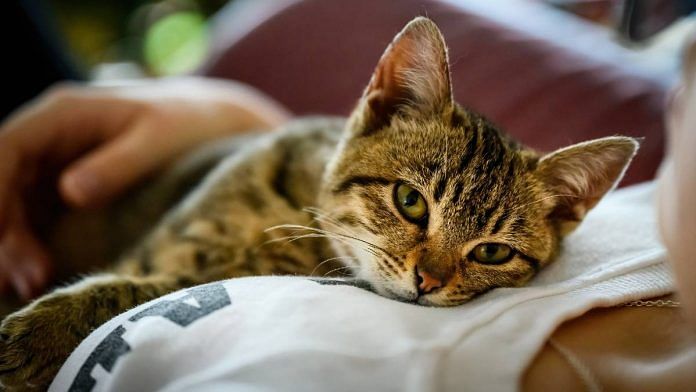Bengaluru: A new study from France shows that cats can recognise speech that’s specifically directed at them, as opposed to speech between adult humans — but only when spoken to by their owners. They’re unable to recognise speech by strangers, according to the study from France, published in the journal Animal Cognition this week.
Humans talk to pet companions like dogs, cats, and horses in tones that are different from adult-directed speech (ADS), and similar to speech directed at young children or infant-directed speech (IDS). While there have been plenty of studies on how dogs respond to dog-directed speech (DDS), there have been relatively few on cat-directed speech (CDS).
This new study is part of a bigger project attempting to understand human-cat vocal communication at the Université Paris Nanterre.
The findings of the study highlight a specific communication style that is evolved between a cat and a single human and relies on experience. They provide further evidence that cats tend to form strong one-to-one relationships with humans.
Also read: Sampling DNA from air could help track animals, transform wildlife monitoring
All the vets’ cats
The study’s primary objective was to figure out if cats are more responsive to CDS than ADS, which could reveal if they know when they’re being spoken to by their human companions. The researchers also wanted to evaluate if cats can distinguish between their owner’s speech and a stranger’s.
Thus, the focus was on human-cat dyads or pairs.
The study was conducted with 16 cats, all of whom belonged to different veterinary students at the École Nationale Vétérinaire d’Alfort (EnvA) or National Veterinary School of Alfort near Paris. All the felines were indoor cats — 12 were single cats living with a female owner, while four were kept in pairs and were living with heterosexual couples. Except for one male, all the cats were neutered. They were aged between eight and 24 months.
To keep the cats comfortable, the experiment was conducted in their own homes.
The team recorded human voices during direct human-cat interactions with owners, and also recorded strangers saying the same phrases in the same tone. These recordings were then played back to cats and their reactions observed.
These monitored interactions fell into four categories — play, treat, separation, and reunion. Humans were asked to use specific keywords and sentences during each of these interactions (“do you want to play?”, “do you want a treat?”, “see you later”, “how are you?”), as well as their cats’ names.
In the experiment, the researchers played back the owner’s ADS recordings thrice, followed by the same speech in CDS, and then once more in ADS. The cats promptly responded to their owner’s CDS and grew disinterested towards ADS.
The experiment then had the strangers call out a cat’s name three times in a row, followed by the owner doing so, and then the stranger again. The same protocol was repeated for commands and speech as well during the four conditions.
Every time, the cats showed interest or responded to their owner’s voices, but not to strangers’ voices, even when CDS was used.
Talking to pets
IDS and pet-directed speech (PDS) register many similarities including elevated pitch, increased variation in pitch, more repetitions, shorter words, and increased articulation. These features stand out from typical ADS, and when directed at companion animals, is called caregiver speech.
Caregiver speech and PDS vary depending on the receiver. Humans often increase pitch when talking to puppies more than to adult dogs. Similarly, humans increase the modulation of their pitch when talking to dogs, but not as much with cats, although in general we increase our pitch even when talking to cats.
DDS and dog responses have been well-studied, and it is well-known that dogs respond better to higher pitches and DDS.
However, studies into cat-human bonding have been fewer in comparison, as cats quickly grow uncomfortable when taken out of their environment and are generally perceived to be less social than dogs. But cat research has been increasing slowly in recent years.
The new study reinforces many others that have suggested that cats are capable of forming very close bonds with humans, even though it was previously thought that they were “independent and ungrateful creatures”, as the authors of this study say.
Studies have shown that cats become very bonded to individual humans, especially women. They can distinguish their own names and many cats prefer human company over food and toys.
(Edited by Poulomi Banerjee)
Also read: Indians bit off more than they can chew. Many pandemic pet dogs homeless now



